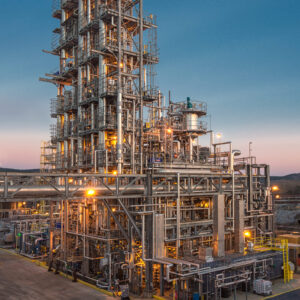Advancing CO2 capture technologies
The U.S. Department of Energy (DOE) recently announced $45 million in federal funding for nine projects to advance CO2 capture technologies. Once the pending awards complete final negotiations, they will also help create the groundwork for a robust U.S. carbon transport and storage industry.
The National Carbon Capture Center (NCCC), managed/operated by Southern Company and funded by DOE’s Office of Fossil Energy and Carbon Management and multiple sponsors, serves as the National Energy Technology Laboratory’s leading carbon capture research and test facility. The NCCC is recognized worldwide for accelerating technology development to reduce greenhouse gas emissions. The NCCC’s highly specialized team advances emerging technologies to deployment, assists in moving carbon capture technologies to scale-up and then helps usher them to successful commercial deployment.
A National Carbon Capture Center connection
Six of the nine technology projects receiving these latest DOE funding awards have a direct testing connection with the NCCC.

1. Calpine California CCUS Holdings LLC. will lead a front-end engineering design (FEED) study for a post-combustion carbon capture system. The study will be at Pastoria Energy’s natural gas combined-cycle facility near Bakersfield, California, utilizing Honeywell’s Advanced Solvent Carbon Capture (ASCC) technology, which is a result of a collaboration with the University of Texas at Austin. The parties completed a third successful test campaign at NCCC in 2023.
2. GTI Energy plans to test an engineering-scale ROTA-CAP™ carbon capture system at U.S. Steel’s Edgar Thomson industrial iron and steel production facility. GTI Energy’s ROTA-CAP™ underwent extensive system-level, proof-of-concept and performance validation testing at the NCCC.
3. Membrane Technology and Research (MTR) Inc. will test its engineering-scale carbon capture system at the Argos USA cement plant in Harleyville, South Carolina. Numerous rounds of MTR membrane testing were completed at the NCCC, providing a foundation for this latest round of testing.
4. Susteon Inc. plans to utilize the NCCC test facility to conduct an engineering-scale demonstration of their high-performance carbon capture solvent SUSTENOL™ under actual natural gas flue gas conditions.
5. Ohio State University will design and test an engineering-scale carbon capture system. The membrane that will be tested at the Holcim U.S. cement plant in Holly Hill, South Carolina, is the same type of membrane tested earlier at the NCCC.
6. Ohio State University also plans to test an engineering-scale carbon capture system for natural gas flue gas. The membrane that will be tested at the Wyoming Integrated Test Center in Gillette, Wyoming, was a similar membrane most recently tested at the NCCC. The field test data produced at the NCCC was instrumental in developing the two DOE-selected proposals.
“This additional DOE funding is a testament to the transformative work of our uniquely qualified and scientifically diverse staff, innovative technology developers, and valued sponsors,” said John Northington, director of the NCCC. “Most of these emerging technologies have benefited greatly from our facility’s critical role in moving these technologies through the early stages of laboratory development, real-world testing, pilot- and large-scale demonstration to commercial deployment.”
Real technologies, real-world testing
Moving forward, the six projects will concentrate on developing lower-cost, highly efficient technologies that will capture CO2 from power and industrial facilities, facilitate permanent geologic carbon storage or convert carbon into long-lasting products.
The NCCC delivers a real-world test environment to accelerate technology development and build a solid foundation primed for future scale-up and eventual commercialization.
“The NCCC staff builds on lessons learned through increased knowledge, hands-on experience and enhanced data from NCCC testing,” said Northington. “Working closely with our technology developers and sponsors, our staff serve as advisors and educators guiding the development process. For these reasons, DOE and the industry continue to put their trust in us and value our test results.”
Focusing on an ambitious goal
The National Carbon Capture Center is committed to successfully demonstrating innovative carbon capture technologies to enable both carbon reduction and removal. The center’s unique strength is to stay involved in the entire development process of evaluating and improving carbon capture. The NCCC accomplishes this by focusing on the distinctive scientific challenges and knowledge gaps to make the technology commercially viable.
Northington noted, “These carbon capture accomplishments will help the Administration meet its ambitious climate goal of achieving a net-zero-emissions economy by 2050.”

